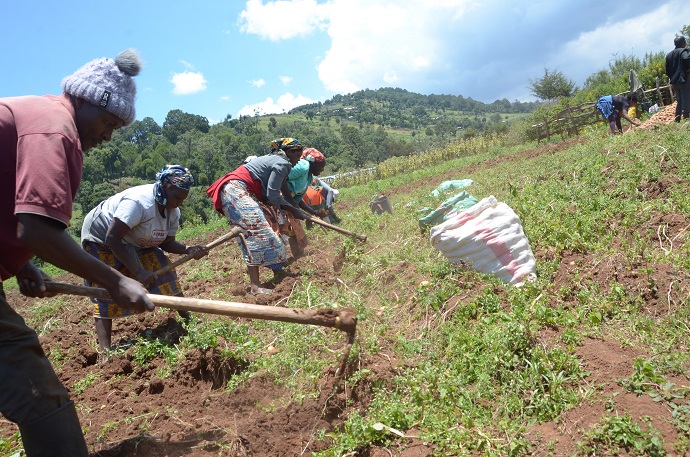
By Joyce Chimbi | j.chimbi@gmail.com
When Kenya’s Deputy President Rigathi Gachagua recently said citizens should be allowed to cultivate crops on public forest land in the now-popular shamba system, there was an uproar across the country.
Gachagua had to retract his statement days later, saying he was misquoted and misunderstood.
The Kenya Forest Service (KFS) now says the shamba system, officially known as the Plantation Establishment and Livelihood Improvement Scheme (PELIS), is a critical tool to help increase forest cover in Kenya.
“Kenyans have become increasingly aware of the benefits of protecting our forests and are suspicious of any activities in and around the forest. But there is nothing suspicious or underhand about PELIS, it is an above board and proven strategy to improve forest cover and its success is well documented,” says James Mwang’ombe Mwamodenyi, Principal Conservator of Forests, Head Biodiversity at KFS.
Mercelyne Khaluruka, who specialises in Forest Plantation Management at KFS, says PELIS is a “non-residential and subsistence cultivation in forests that promotes food security for forest adjacent communities while establishing forest plantations.”
PELIS is a scheme introduced by KFS after the enactment of the Forest Act, 2005 to help increase forest cover and restore degraded forests across the country.
Explaining how the scheme works, Khaluruka says communities adjacent to a particular forest or people who live at a 10-kilometre radius from the edge of a forest, enter into an agreement with KFS and are allocated plots.
Once allocated, they plant seedlings until the allocated area forms closed canopy while planting food crops on the same piece of land over a period of three years when the trees planted can thrive on their own.
Significant success has been noted in farming of potatoes and beans. On average, one hectare can produce 138 bags of potatoes and 17 bags of beans. Studies are still ongoing to find safe approaches to planting maize alongside trees due to the risk of accidentally chopping down trees while cutting down maize stalks during harvesting.
A case study of Malava Forest in Western Kenya showed that there was tremendous success in the implementation of PELIS. In 2001, the forest cover was estimated at 366.9 hectares and this rose to 481.4 hectares in 2016. The increment was driven by increased areas under plantation.
Eric Nahama, a partnership and linkages officer at KFS, says partnerships between KFS and forest adjacent communities are critical as they have a stake in the management of forest resources.
Within the context of attaining the new government target of 30 per cent forest cover by 2030, Beatrice Mbula, Deputy Chief Conservator of Forests, Forest Advisory and County Liaison at KFS, says PELIS will play a critical role.
She says currently, Kenya’s forest cover stands at 8.3 per cent on 5.3 million hecatres and tree cover is currently at 12.13 per cent on 7.3 million hectares.
An estimated 2.6 million hectares out of an overall 5.3 million hecatres of forest cover are under KFS. The remainder is on areas such as private and community land.
An estimated 10,000 hectares of land are under PELIS and a farmer can make up to Ksh300,000 (about $2,500) per year depending on the food crops. Experts at KFS say there is no doubt that PELIS brings a lot to the table in terms of food and revenue, and contributes to the country’s target of significantly improving forest cover.
Mbula says the Kenyan map is more brown than green. She says this is unfortunate because there are countries that have achieved 95 per cent forest cover and there is no reason why Kenya should be lagging behind.
Data on forest and tree cover was revealed during KFS’s survey conducted in 2021 providing a most recent account on where the country stands on its journey towards attaining the 30 per cent forest cover. It is the first time that Kenya collected data on tree cover.
Forest cover is obtained from wall-to-wall mapping of the country using satellite data, while tree cover is estimated partly using high resolution data and partly from field inventory data of Trees Outside Forest (TOF).
KFS has been producing one billion tree seedlings per year to provide quality and certified seeds for its own use and to meet the demands of Kenyans planting trees outside public forests. KFS has 300 tree nurseries, many more are in the hands of schools and women’s groups.
Today, Mbula says there is a need to increase seed production to 1.5 billion per year if the country is to meet the 30 per cent forest cover by 2030. She says technology is in place through the Smart Technology App to monitor, report and act on changes in forest cover in real time, although this is still in its pilot phase.








